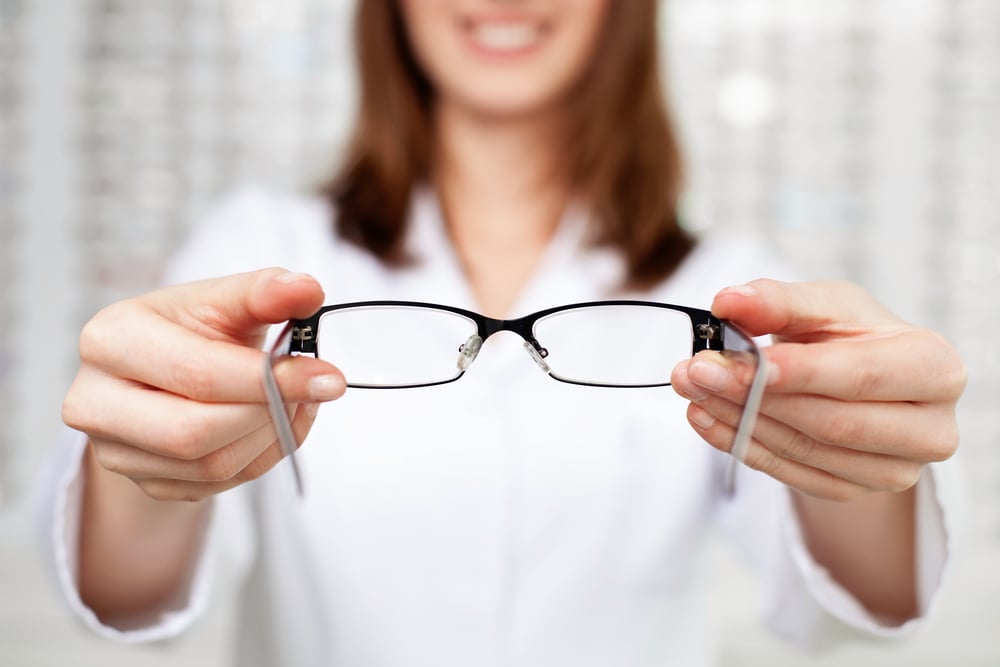
Whether you’ve worn glasses since grade school or found yourself squinting after the age of 40, most who wear glasses can attest to the occasional discomfort, if not outright pain, eyeglasses can cause. One of the most common complaints is headaches, mainly when first wearing glasses or changing prescriptions.
Unfortunately for migraineurs, that eyeglasses headache may be the beginning of a migraine.
Why do you get headaches from eyeglasses? And what can be done to mitigate the problem?
Why People Wear Glasses
The human eye isn’t perfect. Few people can claim 20/20 vision for their entire lives. Eyeglasses were invented once the study of optics showed how lenses could refocus the world for someone who could no longer see clearly.
The problem people face when they need glasses is one of refractive errors in the eye itself. Due to imperfections in the eye, your innate focusing power may not meet your needs. Here are a few typical issues.
- Myopia - also called “near-sightedness,” the word applies when your eyeball is slightly longer from front to back than normal. Or your cornea, the clear covering on the front of your eye, is abnormally curved. These differences cause light to focus at the wrong point inside the eye, so the individual cannot focus clearly on things far away.
- Hyperopia - also called "far-sightedness," hyperopia is caused by an abnormally shortened eyeball or, like myopia, abnormal curvature of the cornea. Light is focused on the wrong place in the eye, and the individual cannot focus on anything up close.
- Presbyopia - humans, once they reach middle age, lose some flexibility in their eye muscles, causing them to have issues with both near and far vision. For those already wearing glasses, no matter the prior correction, you may find you need bifocals or progressive lenses to help you focus at various lengths.
Also, there are other types of refractive errors requiring correction using lenses.
Asthenopia - Eyestrain
The pain from wearing eyeglasses, often presenting as a headache, is caused by eyestrain, medically known as asthenopia. Eyestrain occurs when the muscles of the eye become overtired. Most office workers and others who perform close work are familiar with asthenopia.
The fatigue occurs when you concentrate your attention in the same general place for a long time. The muscle tightens from the lack of variation in focus. Just like your legs may hurt after standing for a long time, your eyes become tired if they focus at the same depth of field for too long.
Eyestrain these days is commonly caused by computer work, smartphone and tablet use, and reading. If you deal with watches, jewelry, or other items with tiny details, you probably suffer eyestrain by the end of the day, too.
What happens is the ciliary muscle, along with several other muscles, becomes stressed. These muscles accommodate viewing objects at various distances. The muscles also become stressed when you begin to wear corrective lenses or a new eyeglass prescription. The more significant the change to the eye, the more the muscles become stressed until you get used to the new prescription.
When Are Headaches More Likely?
Headaches from wearing eyeglasses usually start more often or are more intense when someone goes from not wearing glasses to needing them. Your eyes, like so much of the human body, are a marvel of mechanical engineering. Your eyes have adapted as much as possible to see without correction (even though things were still fuzzy).
When you start using corrective lenses, your eyes need a period of adjustment. In the meantime, you experience eyestrain and, sometimes, that causes a headache. A significant change in prescription can have the same effect, as can moving from single vision lenses to bifocals, trifocals, or progressive lenses.
Other reasons you might get eyestrain from glasses are poorly fitted frames, incorrectly measured pupillary distance, or the wrong prescription.
Reduce Eyestrain, Reduce Headaches
If you are just starting to wear glasses or if you have a prescription change, you can take a couple of routes to minimize eyestrain and any attendant headaches.
Method 1:
- Wear your glasses as often as possible to let your eyes adjust.
- Only take them off for short periods to rest your eyes, but be sparing.
- Don’t alternate between wearing your new glasses and wearing your old glasses.
- Take over the counter pain medication for the headache.
- Take off your glasses in a dark room. Doing so allows your eyes to relax without the need to focus on anything.
Method 2:
- Wear the glasses for three to four hours on the first day, then allow your eyes a break.
- Gradually extend the amount of time until you are wearing them every day.
- This method works best for someone moving from no glasses to wearing glasses.
If you work in front of a computer screen for hours, use high-grade anti-reflective coatings on the lenses to reduce glare. If you wear bifocals, a slightly weaker prescription may reduce the strain on your eyes. When your work requires you to focus at one distance for long periods, give your eyes a break.
- Look up from the screen every 15 minutes.
- Focus on an object in the distance for 30 seconds. Alternate between looking at a distance while seated to looking while standing. (It gets you out of your chair every 30 minutes, too.)
- Blink rapidly 10 times to re-wet your eyes and spread the tears. Dry eyes are also stressed eyes.
Headaches from wearing glasses aren't uncommon, but you have options to reduce the problem.
If You Keep Having Headaches
If you continue to experience headaches or dizziness, and it seems to be due to glasses, go back to your optometrist. You may find that the frames you have don't fit your face correctly, or that the prescription resulting from your eye exam is incorrect.
When you chose your frames, the optometrist or technician probably had you look at them so they could put a black dot on each lens or have taken a ruler to measure your face. They measure the distance between your pupils so the lenses can be ground to match the optimum focusing point with your eyes.
Making lenses that correct as they should is more difficult if you are wearing a frame that is too narrow or too wide for your face. Inaccurate measurements and ill-fitting frames cause even more problems if you use specialty lenses such as progressives.
Eyeglasses can be a source of headaches, even a source of migraines. Take the time to get used to your new glasses, understanding your eyes need to adjust. If you continue to have problems, see your optometrist and, if needed, your primary care physician to check for other possible causes.



